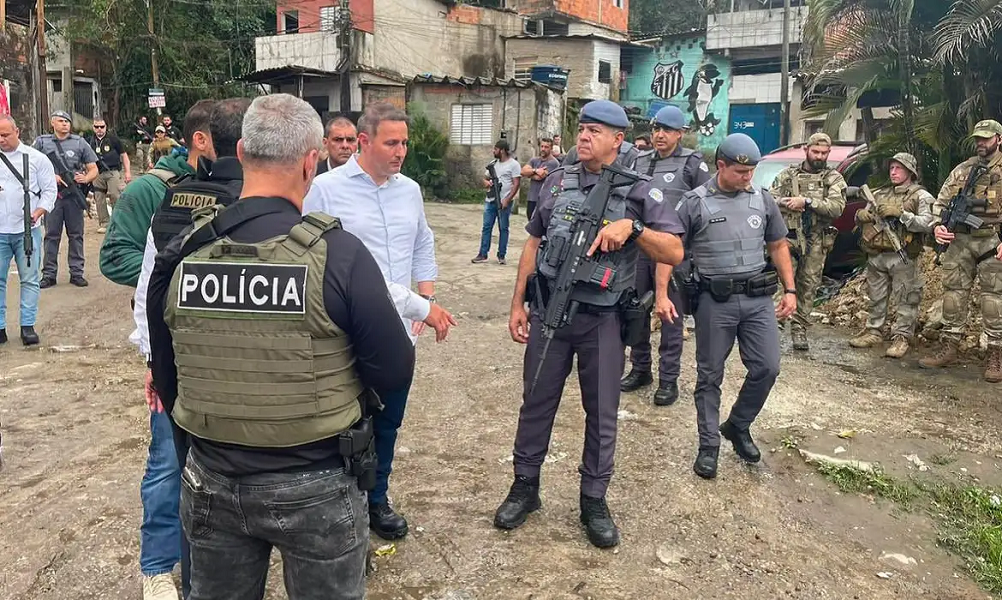The number of robberies recorded from January to August 2025 fell by 14.7% in the state of São Paulo and by 13% in the capital, according to statistics released on Tuesday (30/09) by the São Paulo Public Security Secretariat (SSP-SP). This represents the most significant drop in robbery indicators for the period over two decades and reflects the continued impact of targeted policing strategies and expanded use of surveillance technologies. However, during the same period, the number of homicides in the capital increased by 10%, rising from 318 murders between January and August last year to 350 this year. Despite this increase, the month of August recorded a decline in homicides—from 48 to 36 deaths, suggesting that the situation, while concerning, may be showing early signs of stabilization.
This Content Is Only For Subscribers
To unlock this content, subscribe to INTERLIRA Reports.
Homicides in the State
Statewide, homicides remained practically stable: 1,690 murders were recorded from January to August this year, three less than in the same period of 2024. These figures do not include deaths resulting from police interventions, robberies followed by death, or bodily harm leading to death (cases in which intent to kill is not proven). There were 194 homicide victims in August across the state—11 less than a year ago and the lowest number for the month of August in the historical series, which began in 2001.
Concentration in the Capital
The increase in homicides this year is concentrated on the outskirts of the capital. The jurisdiction of the city’s 6th Sectional Police Station, in the South Zone, saw an increase from 53 to 93 homicides between January and August 2025 compared to the same period last year. Among the recorded cases were the 15 human remains found in a clandestine cemetery in Jardim Apurá. In the city center (1st Sectional Police Station), there were ten more deaths from January to August (from 31 to 41 victims). On a municipal average, these increases were offset by declines in homicides in the south-central region (between Vila Mariana and Americanópolis, the 2nd Precinct area) and in the East Zone (in the 7th and 8th Precinct areas, there were decreases of 6% and 9%, respectively).
Robberies
In both the state and the city of São Paulo, robberies reached their lowest number for the month in the last 24 years. Statewide, 13,200 cases were recorded in August, representing a decrease of almost 13% compared to August of last year. Year-to-date, the reduction in robberies reached 14.7%. In the capital, comparing the period from January to August, there was a 13% drop in robbery reports since 2024—totaling 68,200 incidents over eight months. There were 8,300 robberies in the city last month, 596 fewer (a 6.6% decrease) compared to August 2024.
Thefts
Reported thefts, however, did not follow the same downward trend. A total of 277,000 cases were registered statewide over eight months. In the same period last year, there were 2,689 less thefts (a difference of 1%). This increase was concentrated in the months of January, March, April, and May of this year. In August, there were 1,262 less reported thefts compared to last year. In the capital, thefts rose by 4.7% from January to August, reaching 166,800 occurrences. In August, 22,000 thefts were reported in the city, 1,786 more than in August 2024.
Rapes
There was also an increase in the number of rapes reported in both the state and the capital. From January to August, 9,639 cases were recorded—119 more than in the same period last year. In the capital alone, 1,948 cases were reported, 12 more than in 2024.
Analysis:
The latest data from São Paulo’s Public Security Secretariat reveals a clear contrast in recent crime dynamics. While robberies have fallen significantly, reaching their lowest level in more than two decades, there has been a rise in thefts, especially of cell phones. This shift reflects a change in criminal behavior: as police strategies and surveillance technologies make armed robberies riskier, many offenders are turning to non-violent theft, which carries a lower chance of confrontation or imprisonment.
The trend also shows an evolving criminal economy linked to digital fraud. Stolen smartphones can be used not only for resale but also to access banking apps and personal data, allowing criminals to apply scams or make unauthorized financial transactions.
The increase in homicides in São Paulo, particularly in the capital’s outskirts, suggests a localized rise in lethal violence linked to territorial disputes, organized crime, and social vulnerability. While the overall number of killings in the state remains stable, the sharp growth in specific areas—such as the South Zone and parts of the city center—indicates uneven security conditions.
Source: Folha de S. Paulo




